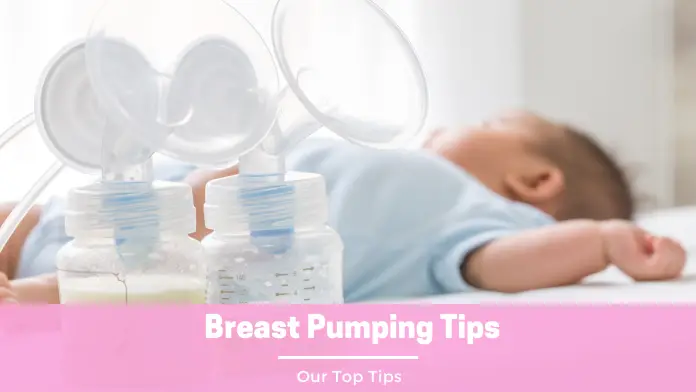Breast pump use in breastfeeding moms ranges from those who rarely ever pump because they are always with their baby to those who exclusively pump due to latch issues, work schedules, or both. Whatever your reason, use these tips to make your breastfeeding journey easier.
Our Top Tips for Breast Pumping
Breastfeeding and pumping are huge commitments and a true labor of love! Your OBGYN, pediatrician, and lactation consultant can all help you as you start out or if you have questions. To help you get started, here’s our run through of the top tips for effective breast pumping.
Get the Proper Fit
Finding the correct flange size is key to making your pumping experience comfortable and successful. A poorly fitting flange can cause clogged milk ducts or decreased milk flow. To find your size, use a tape measure to find the diameter of your nipple in millimeters (make sure you’re measuring the actual nipple, and not the areola). Common flanges come in 21mm, 24mm, 27mm, and 30mm sizes.
Frequency
If you’re exclusively pumping, your pumping schedule should mimic your baby’s feeding schedule as closely as possible. This is typically eight pumping sessions in 24-hours (or about every three hours). Depending on your supply and your baby’s needs, you may need to pump more or less than this.
Relax!
Easier said than done, right? Studies show that relaxing while pumping can increase let down, so try to make yourself as comfortable as possible during your session. Make yourself a cup of tea and always have a water bottle nearby, as hydration is key to producing breast milk. Your baby can help, too; watching a cute video of him or – even better – having him nurse from the other breast while pumping can trigger and increase milk flow.
No Pump, No problem
If you forgot your pump or just don’t have the time to get all set up, hand expression is a way to relieve fullness and express milk on the go. Use your hands to massage your breast from the top down toward your nipple, and then compress your breast near your nipple. It may take some getting used to, but practice makes perfect here, and it’s a great skill to have when in a pinch.
Investing in a hand pump is another option that some women swear by. It’s easier to pack than an electric pump and can be used in the car or a bathroom while out and about.
Accessorize!
There are a few items that are worth the investment to make your breast pumping journey easier. A hands-free pumping bra, good double-zipper storage bags, a packable bottle brush to keep your pump parts clean while on the go, and a small cooler to keep milk from spoiling are a few that you will be pleased you have.
Storing Pumped Milk
You should follow fairly strict guidelines for storing breastmilk to avoid exposing your baby to harmful bacteria:
- Freshly expressed milk is good for three to four hours at room temperature.
- Refrigerated breastmilk is good for 72 hours in the refrigerator (if it’s never been frozen).
- Thawed breastmilk is good for 24 hours in the refrigerator.
- Frozen breastmilk is good in the freezer for six months.
Replace your Pump Parts
Did you know worn out parts on a pump are a common cause of low milk supply? You should aim to replace your parts (tubes, bottles, and flanges) every 90 days.
Choosing a Pump
We’ve written handy guides to:
6 Best rechargeable battery-operated breast pumps
Looking for more ideas?
Your OBGYN, pediatrician, and lactation consultant are great resources when it comes to getting the hang of pumping. We’ve written a range of guides to help you with each step of feeding your baby in more detail. Take a look at these:
Guide to Pumping and breastfeeding schedules
Guides to breast pumps and power pumping
How to keep baby bottle warm at night


